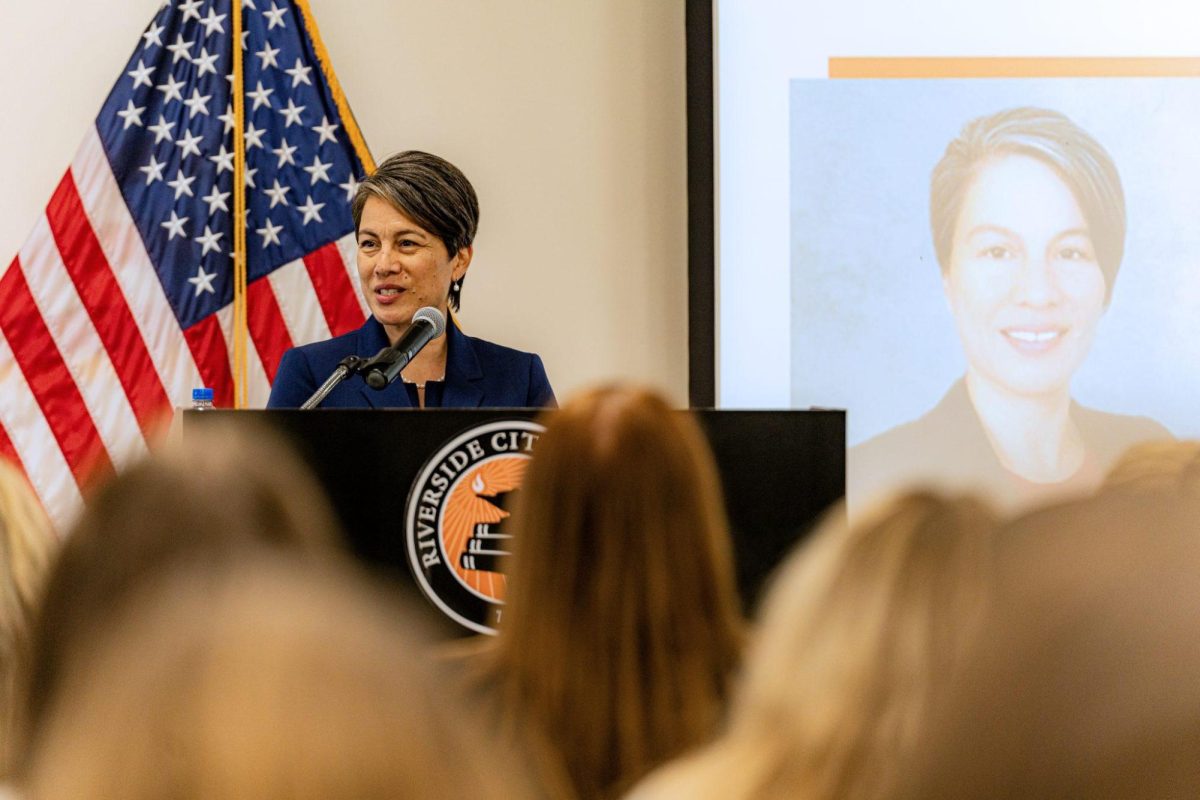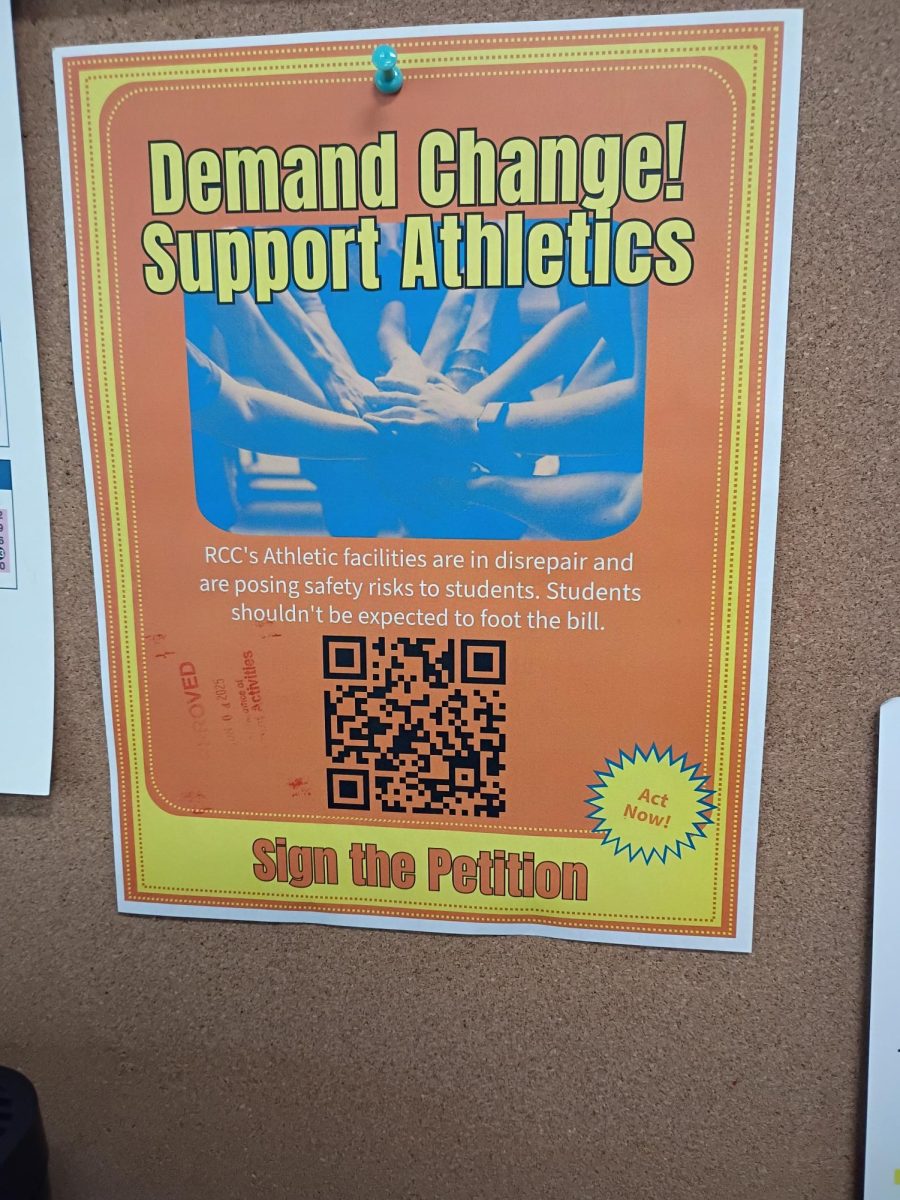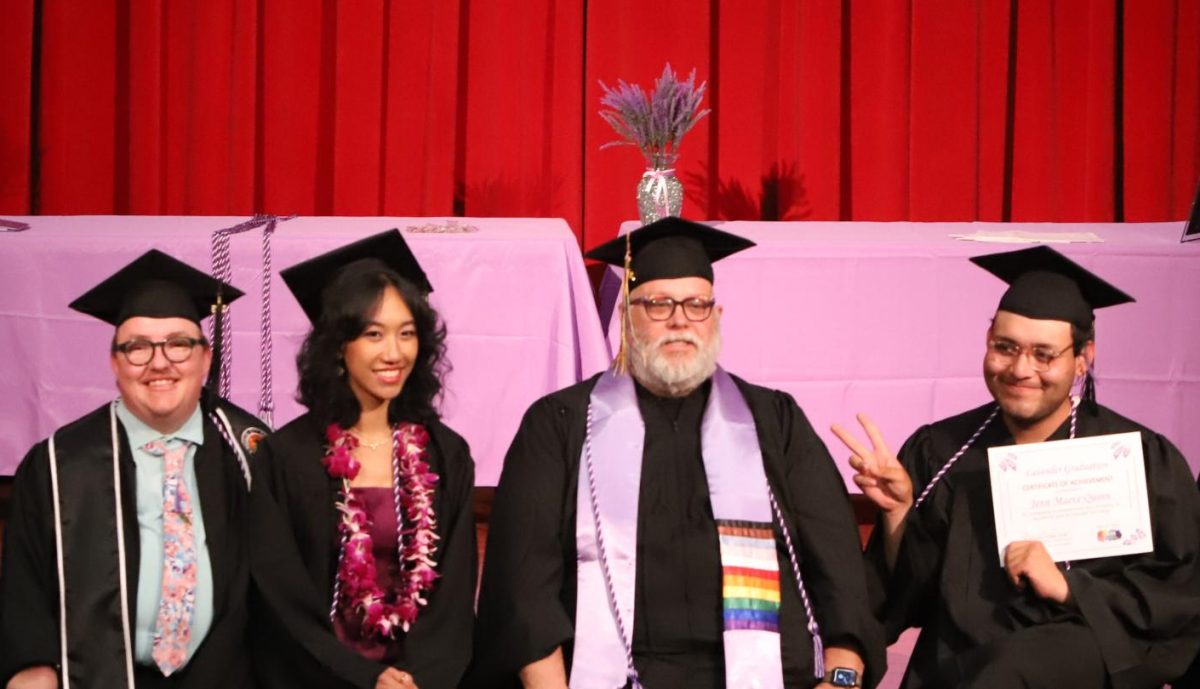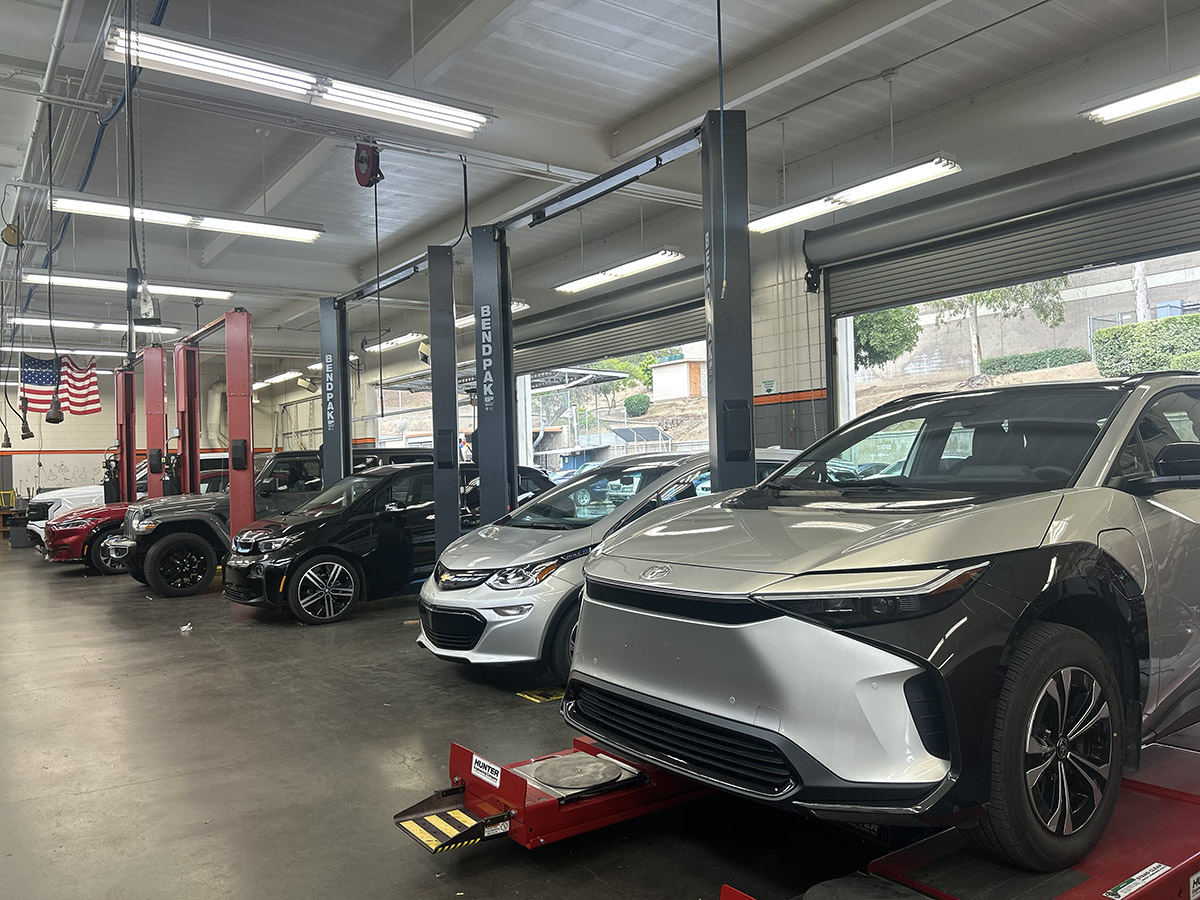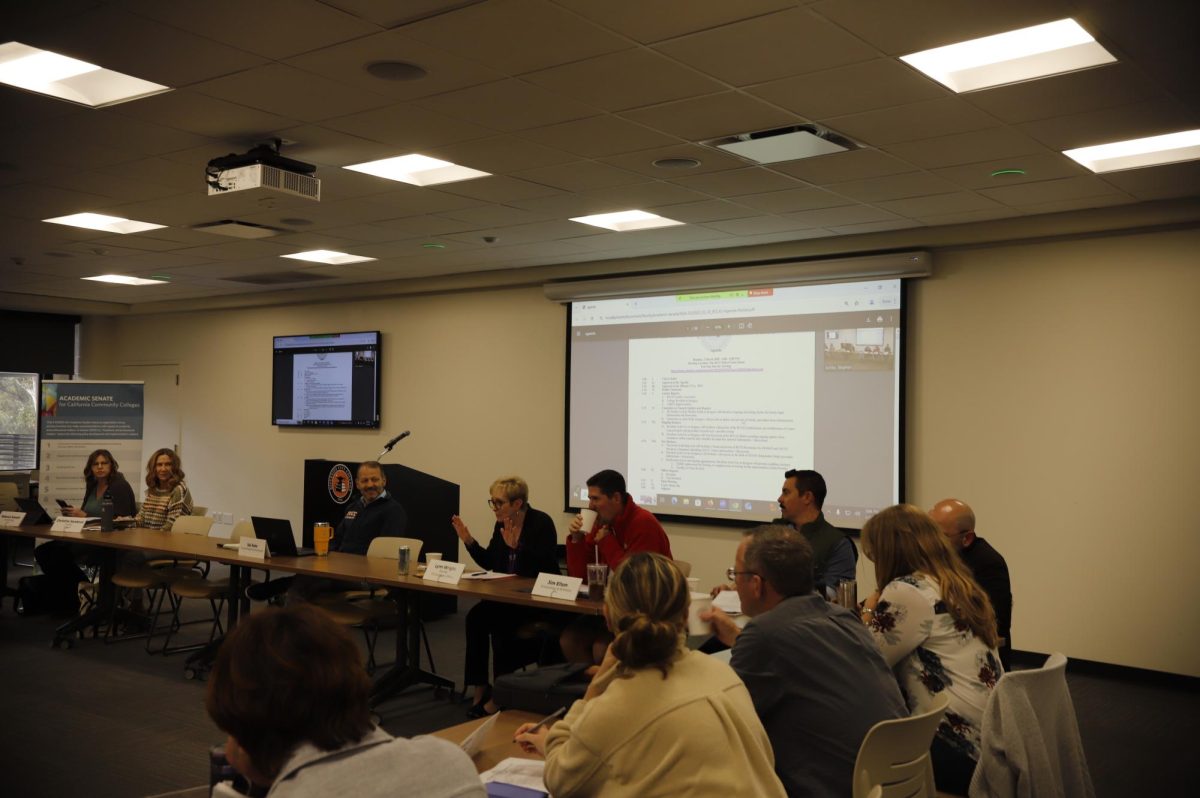By Eui-jo Marquez
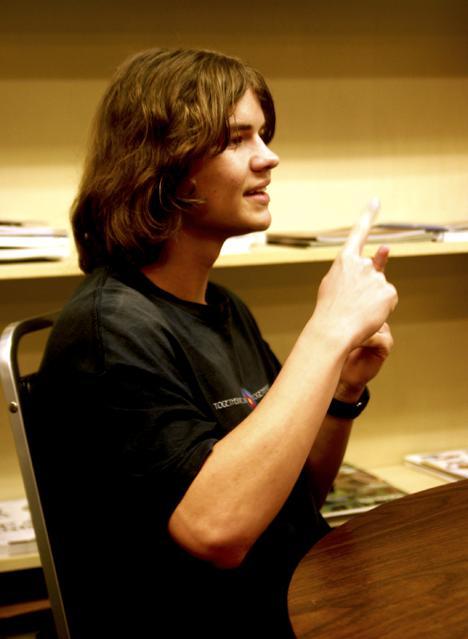
Communication
By Eui-jo Marquez
They go to Starbucks. They gossip. They play computer games and watch TV. They look forward to college and careers. The only thing different about deaf people is that they cannot hear.
“Deafness” refers to different degrees of hearing loss. Some people are completely deaf, while others are considered “hard of hearing.” Deaf, with a capital “D,” refers to the collective deaf community. This community, especially prominent in Riverside County, shares pride in a common culture, language and identity celebrated this week during Deaf Awareness Week.
Various factors can cause deafness, including genetics, illness and accidents. California School for the Deaf, Riverside student Gloria Gonzales became deaf at age eleven as the result of a head trauma accident. She continued attending public schools until her freshman year of high school, when she transferred to CSDR. According to Gonzales, life for a deaf student in mainstream school is difficult, especially in junior high. Now a Senior, she hopes attending the National Technical Institute for the Deaf in Rochester, New York next year will be different. She dreams of becoming a writer.
For deaf student Jerome Starr, RCC’s program of class integration and interpreting services make it the best option for secondary education. The college serves around 100 deaf students in integrated courses with students of varying degrees of hearing loss. Starr commutes from Barstow daily to attend class at RCC, claiming that when it comes to deaf education, “it does a wonderful job.”
Various tools can help deaf people hear some sounds. Hearing aids amplify sounds while cochlear implants bypass damaged parts of the ear to directly stimulate the auditory nerve. Cochlear implants are available to most deaf people but may not work for everyone. Because she had experience hearing before her accident, Gonzales was a good candidate for implants. She speaks very clearly, and with her new implants she is almost considered fully hearing. She is very happy to hear music again-especially Green Day’s “Wake Me Up When September Ends.”
“When did they make that song, like in the year 2004? I’m like, oh my God, I missed out!” she said.
Because not all deaf people can read lips or learn to speak vocally, most deaf people learn American Sign Language, or ASL. Many deaf people, like CSDR student Alec Mikiforov, wish everyone would learn to communicate through ASL. “I would like for them to be able to sign, to communicate with all of us,” he said through an interpreter.
CSDR, one of two deaf schools in California, is a verdant 56 acres in the middle of Riverside . About 500 students come from as far as San Diego and San Luis Obispo to attend the school.
The campus includes an elementary school, junior high, high school, dorms and infirmary. “We provide everything that the students may need, right here on campus,” said Laurie Pietro, CSDR outreach coordinator and spokeswoman. Gonzales loves attending CSDR: “The teachers are very helpful and there’s less people in the classroom so they pay attention to you more, and you can understand them more clearly because they sign.
“They make you feel like at home, it’s like everybody’s the same, you can’t make fun of anyone because they’re deaf themselves,” she said.
According to Pietro, students at CSDR find a level of camaraderie that deaf students may not find at other schools. “You’ll often find that the mainstream high school students are kind of isolated, they’re lonely, they want to have their peers and be able to communicate openly and freely at all times. So that’s why they want to come here,” she said.
According to Zibby Bayarsky, director of the Center on Deafness- Inland Empire, or CODIE, about a quarter of deaf students attend CSDR. Most attend mainstream schools. About half of each of CSDR’s graduating classes-usually 35-50 students-go on to college. Most attend Gallaudet University, a deaf school in Washington, D.C. Cal State Northridge is another popular school for deaf students.
CODIE is responsible for helping deaf people in Riverside become independent by offering services like counseling, community education, job placement and interpreters. They are also home to the Model Deaf Committee, which, through support from Mayor Loveridge, has made Riverside into a model deaf community. The city offers ASL classes to city employees and education on Deaf culture to local business owners.
Regal Movie Theater, located at the Riverside Plaza, is one of the few theaters to offer captioning on most films every day. “Only a handful of movie theaters in the United States show captioned movies daily,” Bayarsky said.
September 17 marked the beginning of Deaf Awareness Week. ASL classes are offered daily at noon, and there is nightly entertainment and a baseball game between members of the Deaf community and the Riverside Police Department at RCC on Saturday night. This will be the first time RCC has participated in Deaf Awareness Week.
Acknowledgement, communication, and acceptance are key in deaf-hearing relations. “Don’t treat deaf people any different than you would anybody else that came up to you on the street,” offered Bayarsky. Perhaps CSDR student David Camarena said it best: “We’re human, they’re human. I can’t hear, will use pen and paper to write with. Other than that, we’re equal.”

